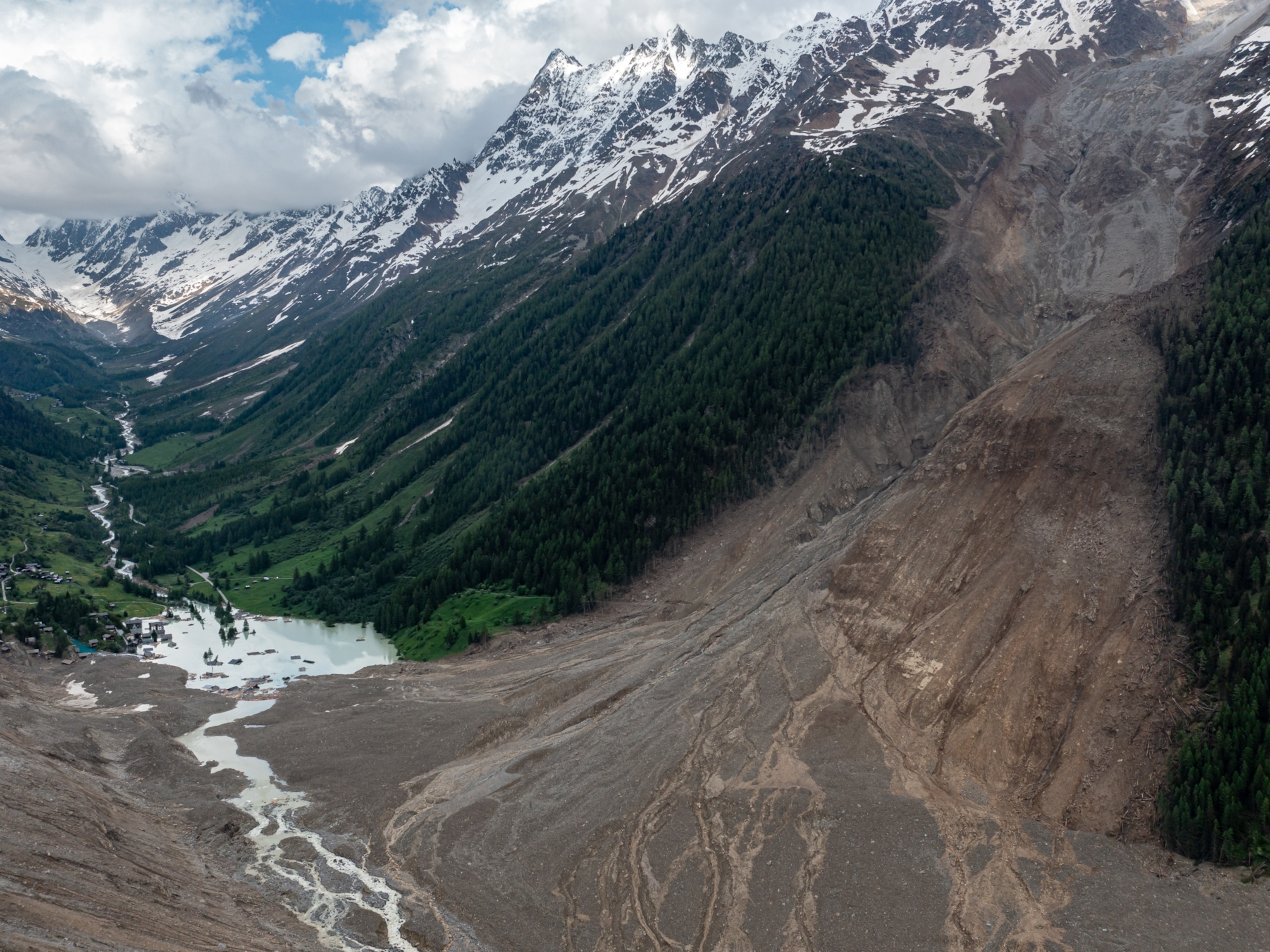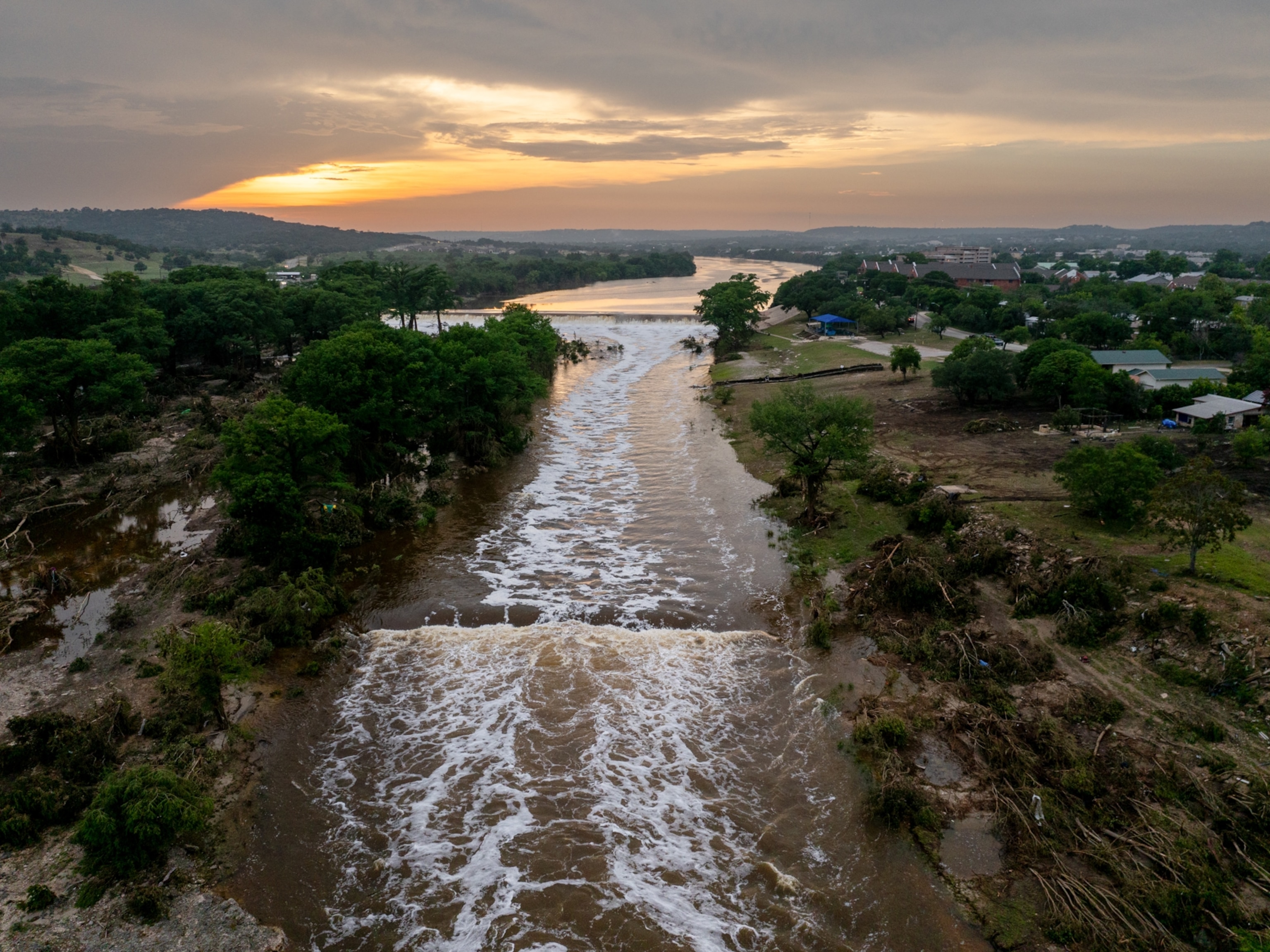
Climate change is roasting the Himalaya region, threatening millions
Over 200 scientists collaborated on a report that forecasts a hot future for the high mountains of Asia.
The peaks and valleys of the Hindu Kush Himalaya mountain ranges are some of the most inaccessible, remote regions in the world today—but even the most isolated valleys have been touched by climate change, say the authors of a comprehensive new report about the vast region. The changes have already complicated life for the 240 million people who live amongst its crags and peaks, the authors say, and the effects are likely to snowball in the future.
Across the high mountain region, which stretches from Afghanistan in the west to Myanmar in the east, air temperatures have risen by nearly two degrees Fahrenheit since the start of the 20th century—and the cold temperatures have warmed up faster than in the rest of the world. In response, glaciers are retreating; permafrost is melting; and weather patterns are becoming more erratic, disrupting previously reliable water sources for millions and instigating more natural disasters.
“Mountains matter, and it's time we start paying attention to them,” says Phillipus Wester, chief scientist at the International Centre for Integrated Mountain Development, in Kathmandu and one of the lead authors of the report, which pulled together over 200 scientists and analysts.
Without immediate, global attention to curb future warming and effort from the countries within the mountain range to adapt, future climate change may tip the region into difficulties from which it will be challenging, if not impossible, to recover, the study warns.
Hot peaks and shifting snows
The Hindu Kush Himalaya encompass hundreds of the world’s most iconic mountains, hold over 30,000 square miles of glacier ice—more than anywhere else in the world besides the poles—and sustain 240 million people in their peaks and valleys. The mountain ranges also cradle the headwaters of rivers like the Indus, Ganges, and Brahmaputra that provide water to billions in the lowlands downstream.
The high mountains are feeling the impacts of climate change already, and more intensely, than many other parts of the world, though it’s not fully clear why.
“Even if global warming is limited to 1.5° [Celsius, or 2.7° Fahrenheit] by end of the century—and you could call it a miracle if that happens—the high mountains are likely to warm even more,” says Arun Shrestha, one of the lead authors of the report’s chapter on climate change and a climate scientist at ICIMOD. That number will spike up to at least 3° Fahrenheit by the middle of the century, he says—“quite a significant warming.”
Some parts of the region—the Tibetan Plateau and much of the northwestern edge of the mountain belt, including the Karakoram—are even more sensitive: under the 1.5° C (2.7° Fahrenheit) warming goals suggested by the IPCC last fall, those pristine peaks could see warming of over 3.6° F.
And without coordinated global efforts to curb greenhouse gas emissions, the numbers could creep even higher. If we continue on the current emissions path, the authors say, the high mountains would see temperatures more than 5.4° F higher by the end of the century. And if emissions creep higher, that number could rise to over 10° F. (Read about how carbon emissions will shape Earth’s future).
For farmers growing apples or grains on steep mountain slopes, that means they have to nudge their orchards higher upslope, chasing the cool nights and seasons necessary for their crops. For others, changing patterns of snow and rain leave formerly reliable streams and springs dry—or dangerous with the threat of disastrous floods.
Snowfall and rain patterns have also shifted as climate has warmed. Most snowfall in the high mountains along the eastern swath of the region falls during the summer, when the powerful monsoon noses up into the mountains. But in recent decades, that monsoon has weakened, starving the mountains of the snow that feeds glaciers and that provides key water to many farmers as it slowly melts through the springtime, right when they need water to get their crops planted. This monsoon is predicted to weaken further in the future, further disrupting critical water supplies to farmers that rely on it.
“We have to expect that with climate change, weather events will become more variable,” says Nina Bergan Holmelin, a researcher at Norway’s Center for International Climate Research who studies farmers and communities in the region. “The timing is so important. It’s much more challenging to deal with droughts and floods and intense rain and then nothing for a long time.”
(Learn about what global warming is, and why we know it’s real.)
Melting glaciers: Water changes and disasters compound
At the same time, many glaciers across the region—particularly on the Tibetan Plateau and on the eastern stretches of the mountain range, like the central Himalaya range and the Khumbu, where some of the most famous mountains of the world stand—have retreated by somewhere between 20 to 47 percent since 2000, say studies compiled in the report. “And under business-as-usual, 50 percent of the volume will be gone by the end of century,” says Joseph Shea, one of the lead authors of the report’s chapter on how the region’s ice is changing and a glaciologist at the University of Northern British Columbia in Canada.
Glacier and snow melt feeds into rivers, sustaining their flow. For the Indus, which gets about 40 percent of its water from glacier melt, that means that in the short term, there’s actually more water coursing down from the high mountains.
(See photos of how the high Andes glaciers are responding to climate change.)
As glaciers get smaller, though, that water supply to rivers like the Indus will likely dwindle, says Michele Koppes, a climate scientist at the University of British Columbia in Vancouver, who was not involved in the report. “Glaciers and snowpack are like big storage banks of water,” she says. That water can be released slowly over seasons, decades, or even hundreds of years as the glaciers and snowpack melt. But climate change is forcing the melt to happen faster than it used to—so it is “drawing on their storage tanks,” she says, leaving the communities and ecological systems that rely on that water vulnerable.
Changes to the glaciers also has another effect, says Sudeep Thakuri, a glaciologist at Tribhuvan University in Kathmandu who was not involved in the report: More melt means more water pools in lakes on top of the glaciers or at their lower snouts. Since 1977, he and colleagues found, the number of glacial lakes across the Nepal Himalaya has more than doubled.
But those lakes are often growing so fast and hold so much water that they can—and have—burst through the rockpiles holding them back, resulting in devastating outburst floods.
And as steep slopes that had been locked in place by frozen soils have thawed, rockfalls, collapsing terrains, and avalanches have become more common.
Since the 1980s, the changing climate conditions have driven an uptick in the disaster risk in the region, the report says, which will ramp up in the future.
Time for action
The science, in many cases, is still catching up to the lived experiences of the millions of mountain residents. In 2007, an IPCC global assessment report highlighted the dearth of scientific knowledge about exactly how climate had already and would continue to impact the critical, iconic, vast region in the future. At first, the panel suggested that the glaciers in the region would disappear completely by 2035. Glaciologists who knew the region pushed back—the situation was much more complex, they knew. But “what was clear was that we didn't have enough robust scientific research to say what was possible,” says Shrestha. “Of course, we knew they were shrinking, but we didn't know how much.”
So the challenge was set, and scientists from around the world dug into the knotty problem. Many of the glaciers of the region are in remote valleys or hard-to-access mountains, complex areas that make it particularly tricky for scientists to figure out how they are changing from satellite imagery. Scientists struggled to find enough good, reliable data across the vast swath of the mountain range.
Now, a coherent picture has emerged. And what it shows is a region that will face enormous challenges in the coming years, says Wester. The region, with its millions of residents and important resources for the downstream neighbors, has not gotten the international attention it deserves, he says.
“We know enough now to take action,” Wester says. “We can't hide behind an excuse that we don’t have the data, that there’s more research needed—now, we have 650 pages of assessment. 210 people came together for three years to look at this carefully. We know this is going to be tough, and we know enough to take action.”



















